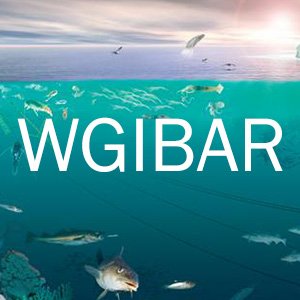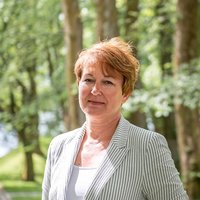Prosjekt: ICES Working Group on the Integrated Assessments of the Barents Sea (WGIBAR)

| Periode | 10. november 2017 - |
|---|
WGIBAR's aim is to summarize and analyze up-to-date knowledge on the state of the Barents Sea ecosystem. Furthermore, the group will assist adaptive management by promoting input to monitoring strategies and advice as part of holistic Barents Sea management.
The Barents Sea is a 1.6 million km2 high-latitude shelf sea that borders the Polar Basin to the north, the Norwegian Sea basin to the west, and the coasts of Norway and Russia to the south and east respectively. It sustains some of the largest fisheries in the North Atlantic, with the eponymous cod stock being the world's largest.
After a period of overfishing in the 1980s, fish stocks there are now harvested sustainably. Other than fishing, development of oil and gas exploration and exploitation in the area is imminent. This strong human presence places great demands on both monitoring and the capacity for science-based advice.
Considering these changes in terms of management will be an ongoing and efficient process in which WGIBAR aims to play an important role. Climate change and current reduction of ice cover in the northern Arctic region is leading to rapid changes in the Barents Sea ecosystem.
History and development of WGIBAR
The WGIBAR group was established in 2013. The group should be working with updating of ecosystem overview and combine this with long-term species trends and long-term trends in drivers of ecosystem change such as climate, oceanography, and fishing pressure.
Understanding is of course not uniform across ecosystems and therefore critical processes are better understood in some areas. For this reason, the development of regional overviews ensures that local management objectives can be addressed.
Ecosystem overview and WGIBAR highlight ICES capacity to provide integrated advice, which is expected to meet the future needs of advice on the environmental status of the marine ecosystem.
Co-chairs:
1. Period (2013–2015): Yury Kovaljev (PINRO, Russia) and Edda Johannesen (IMR, Norway)
2. Period (2016–2018): Elena Eriksen (IMR, Norway) and Anatoly Filin (PINRO, Russia)
3. Period (2019–2022): Elena Eriksen (IMR, Norway) and Anatoly Filin (PINRO, Russia)
4. Period (2022– ): Berengere Husson (IMR, Norway)

Status for Barentshavets økosystem 2019
- Havtemperaturen i det innstrømmende atlanterhavsvannet til Barentshavet har gått nedover de siste årene, og temperaturene i 2019 var nær langtidsmiddelet. Dette er på samme nivå som de var tidlig på 2000-tallet, og har sammenheng med lavere temperaturer i Norskehavet.
- På sensommeren 2019 hadde mesteparten av det vestlige Barentshavet temperaturer på 0–0,5˚C under langtidsmiddelet, mens i de østlige delene var det fremdeles temperaturer over langtidsmiddelet.
- Det nordlige Barentshavet var dekket av arktisk vann, og i samme området ble arktiske amfipoder og 0-gruppe polartorsk observert.
- Mengden av plankton har økt som konsekvens av redusert beiting fra små bestander av lodde og polartorsk, og middels mengde av ungsild i 2019.
- En middels stor loddebestand produserte en sterk årsklasse, mens relativt store torske- og hysebestander produserte middels og svake årsklasser i 2019.
- Torskebestanden har kontinuerlig gått ned siden 2013, og i 2019 var torskebestanden på samme nivå som tidlig på 2000-tallet.
- Mengden av toppredatorer øker i systemet. Ulike hvalarter overlapper mye med lodde, mens delfiner først og fremst overlapper med 0-gruppe fisk. I 2019 var bardehvalene markant konsentrert i området rundt Bjørnøya med store tettheter av 0-gruppe fisk, ved Hopen og i de nordlige områdene opp til 78˚N.
- Selv om fiskeriene blir begrenset gjennom høstingsregler og utkastforbud, er likevel fisket den største direkte menneskelige påvirkningen på Barentshavets økosystem. En økende påvirkning kommer fra økt skipstrafikk, ikke minst turistcruisene til og rundt Svalbard. Den trafikken er mer enn doblet på ti år.
- Nivåene av miljøgifter i fisk i Barentshavet er forholdsvis lave og under grenseverdiene satt for mattrygghet i EU og Norge. For de fleste stoffene er nivåene stabile eller svakt nedadgående.
- I et litt lengre tidsperspektiv er likevel den sterkeste påvirkningen på økosystemet økt temperatur og lavere isdekke.
Publisert: 05.09.2019 Oppdatert: 06.07.2023

